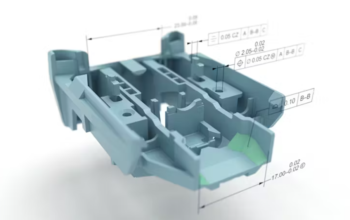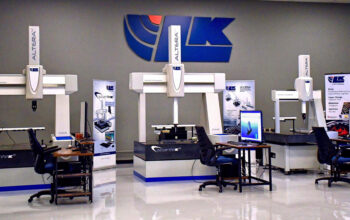Ateliers Paul Bracq brought in Digimeca’s expertise to digitize the entire bare body of a Mercedes Pagoda as part of an atypical project.
Located in Bordeaux, the Ateliers Paul Bracq have earned their place in motoring history. Renowned car designer Paul Bracq first started working for major car makers such as Mercedes, BMW and Citroën back in 1957. He contributed to the design of several vehicle models, including the stylish Mercedes Pagoda (230 SL), which rolled off the production lines in 1963. In 2013, Boris Bracq decided to breathe new life into the old legends conceived by his father and set up his own car restoration garage, Les Ateliers Paul Bracq.

A new project was hatched in these workshops, that of transforming a Mercedes Pagoda, originally a convertible, into a 2 x 2 coupé version by adding two seats at the rear. No such Pagoda version was originally produced, but a single model will come out of the Ateliers in a few months’ time. Extending an existing Pagoda first requires cutting it in half just behind the doors, then realigning the structural and body parts. To bring off this feat, particularly for creating new bodywork parts (roof, doors), Ateliers Paul Bracq has brought in Digimeca’s expertise.

On a daily basis, Digimeca is using the Kreon Ace measuring arm with a Skyline Eyes 3D scanner for the following applications:
- Scanning for reverse engineering of old, non-CAD parts
- Scanning prototypes when modifying or creating parts using manual techniques
- Scanning for 3D printing in order to duplicate existing parts


Ultimately, Digimeca will come up with a complete 3D digitization of the Mercedes Pagoda. While this may seem like a painstaking task, thanks to the Ace measuring arm and the ultra-precise Skyline Eyes 3D scanner, it can be completed quite quickly and down to the tiniest details. Unfortunately, given that the mechanics are working on the vehicle in parallel, the car cannot be scanned in one go but only in line with ongoing workshop activities. The bare body of the Pagoda is first scanned on the ground and then placed on a bridge for probing the lower parts and underside. As the vehicle is in the process of being restored, the sheet metal is sometimes painted and sometimes not, but the scanner automatically adapts to these different finishes. Two days will ultimately be needed to scan the entire bodywork.
Digimeca uses spheres placed on the bodywork to reposition the probes based on the different positions of the arm around the vehicle. During scanning, the Geomagic Wrap software generates a polygon mesh in real time, then is used for repositioning, surface cleaning, hole filling etc.

Boris Bracq, founder of Ateliers Paul Bracq:
“With this restoration, and in our quest for perfection, we bring together the best of modern digital technologies with traditional manual skills.”

Upon receiving the complete mesh for the vehicle, Boris Bracq will start reverse engineering the entire car. The surfaces will be designed using the 3D modelling software Rhinoceros 3D. CAD data will then be used to manufacture the new parts. Incidentally, the Pagoda’s complete digitization is part of a more ambitious conservation project, along with archiving the vehicle’s original technical documentation.

About Digimeca:

Digimeca provides engineering services and in particular reverse engineering for the automotive and aeronautical sectors. Equipped with 3D printers, the company also specialises in prototype production using additive manufacturing.









